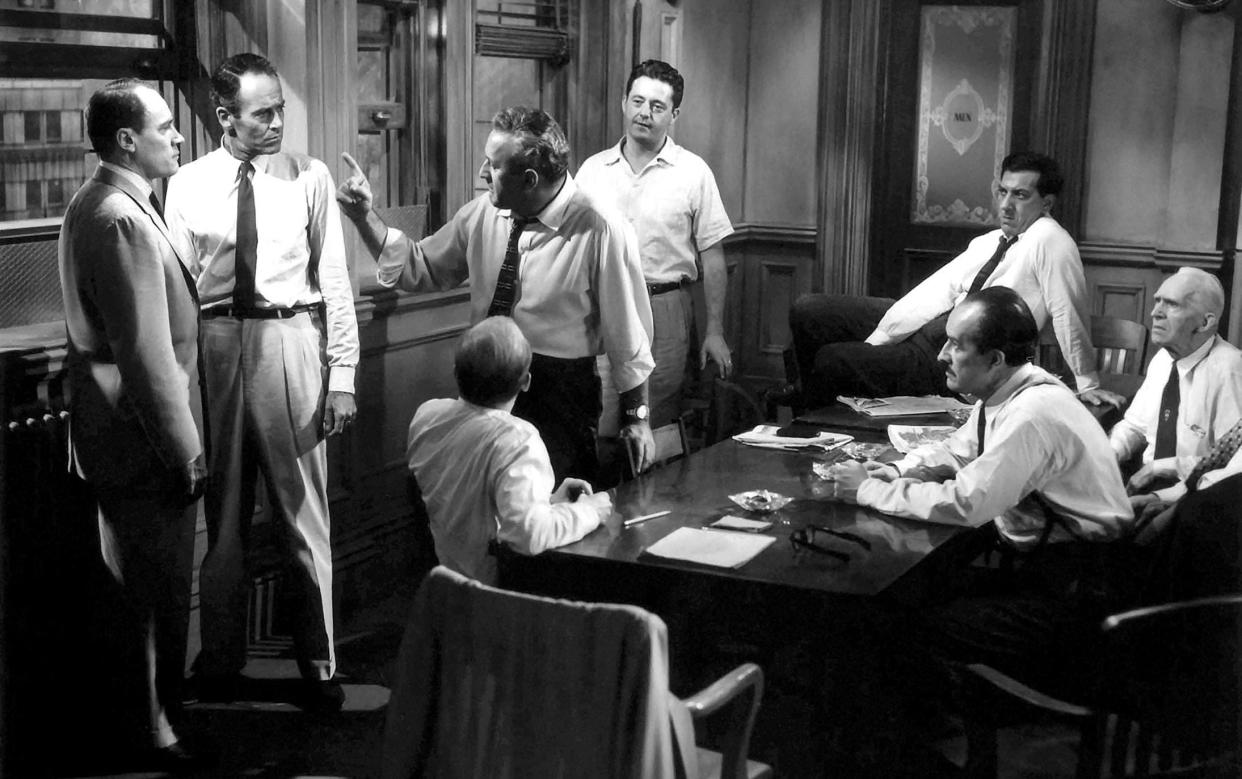Is 12 Angry Men really a classic film – or just a bunch of lazy caricatures?

Sidney Lumet’s 1957 film 12 Angry Men is recognised as a masterpiece in both the United States and Britain. In 2011, it was among the top 20 most-screened films in British secondary schools. The plot is well known. A Hispanic teenager is charged with murdering his abusive father. We see nothing of the court case, and the jury has been sent out to consider its verdict. It is a steaming hot day in New York, and starting to rain.
All but the film’s first three minutes, and a brief scene at the end, is set in the tatty jury room and its adjoining lavatories. Lumet and his cinematographer Boris Kaufman used progressively changing camera angles and close-ups to make the small jury room seem ever more claustrophobic as tempers fray. Eleven of the men – all the jurors are male – initially vote “guilty”. One juror, played by Henry Fonda, says he is not sure: the accused may be guilty or innocent, and he would rather talk it through.
Alongside the film’s educational value (in its demonstration of consensus-building) that so many schools feel they have identified, there is also an under-acknowledged aspect of moral re-education. As both entertainment and propaganda, the film requires the viewer to suspend disbelief.
Each viewer must judge the likelihood of one man convincing 11 others that they are wrong about a matter of life and death. Given that the accused faces execution, one might also question whether so many would decide on his guilt so readily.
A partial explanation is quickly given: some have failed to reckon with the gravity of the situation; others believe the prosecution has a foolproof case; some just want to get to the ball game that evening; others are too stupid to appraise the evidence. Some take their stupidity to downright bigotry: to a couple, the boy’s racial profile means that he must be guilty.
The film is a strongly didactic exercise in avoiding prejudice. There is nothing wrong with that – there are too many real examples of miscarriages of justice to pretend that such a corrective is not necessary. Perhaps the practicalities of screenwriting required so many of the characters to be caricatures. Fonda’s juror easily exposes the implausibility of the key evidence against the accused, which unsettles some of the others. It is simply a couple of hard-line bigots – played by Ed Begley and Lee J Cobb – who hold out for as long as they can.
Often cited as one of the greatest films ever made, 12 Angry Men is certainly stunningly well acted and cleverly constructed. It was a distinguished start to Lumet’s brilliant career as a director. But it relies too easily on the liberal (in the American sense) idea of white, middle-class, patriarchal guilt, with the other jurors being brought smugly into line by Fonda, himself the patriarch of the ultimate liberal Hollywood dynasty. Cinema has produced countless films that parody ignorance to make an unanswerable political point. If the point is indeed unanswerable – as injustice always is – then simple reason, and not caricature, will be sufficient to prove it.
